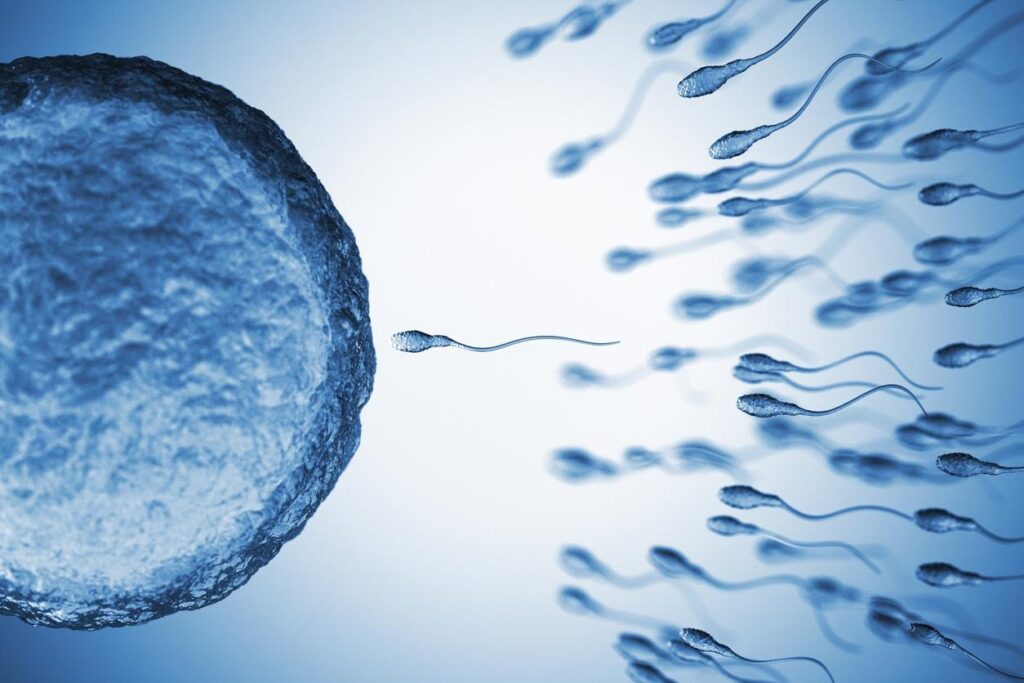
Neonicotinoid pesticides, the world’s most widely used class of insecticides, are linked to male reproductive toxicity in lab animals, especially at higher doses, according to a new scientific review of two decades of evidence.
The findings, published [December 2025] in Environmental Research, add to growing evidence that these insecticides may harm human fertility. Known as “neonics,” neonicotinoid pesticides are banned in the European Union but widely used in the U.S.
The scientists analyzed 21 laboratory studies between 2005 and 2025. Despite differences in design, species, and dosing, more than two-thirds found neonic exposure damaged testicular function and sperm: Sperm counts dropped. Sperm moved more slowly. Shapes became abnormal, and hormone levels changed.
The effects worsened with higher doses or more prolonged exposure to neonics, causing more severe or permanent injury.
“This narrative review…determined that neonics exhibit reproductive toxicity in male rats and mice, particularly impairing testicular function and sperm quality at high exposure levels,” the researchers wrote. “The convergence of animal data, and the lack of human epidemiological studies to date, show a critical need to investigate potential reproductive health risks of neonic exposure in humans.”
Studies show exposure to these pesticides caused:
- Altered gene function and disrupted early embryo development
- Hormone disruption, oxidative stress (a chemical imbalance that harms cells), disruption of mitochondria (the parts of cells that make energy), and injury to testicular tissue
- Reproductive problems that can be passed on to offspring
In addition, the review found mixtures of pesticides may amplify toxicity. Some fungicides, for example, prevent neonics from breaking down, making them hundreds of times more potent, the researchers say.
The review comes amid growing questions about the economic benefits of using seeds treated with neonicotinoids, and as several U.S. states, including New York, act to limit their use. The review also highlights the need for closer scrutiny of chronic pesticide exposure and its potential role in declining male fertility worldwide, particularly since the basic reproductive system works similarly across all mammals, the researchers say.
Male infertility contributes to approximately half of all cases of infertility and affects 7% of the male population. Scientists cite multiple causes, including genetics, lifestyle, and environmental exposures such as pesticides and hormone-disrupting chemicals.
The new review showed:
- Imidacloprid, the most studied neonic, caused widespread testicular damage, lower sperm counts, poor motility, abnormal shapes, and decreased testosterone. Multiple studies found DNA damage and degeneration of the cells that produce sperm.
- Acetamiprid impaired sperm quality and hormone regulation, reducing gene activity needed for testosterone production.
- Clothianidin damaged sperm quality, caused smaller reproductive organs, and weakened the body’s natural defenses against cell damage (antioxidants). It also resulted in more abnormal sperm and, at high doses, lower sperm concentration and increased testicular cell death. Stress made the damage worse.
The researchers also looked at thiacloprid, a lesser-studied neonic that is not approved for sale or new use in the U.S. and is restricted in the E.U. Thiacloprid produced substantial declines in sperm count and hormone disruption even at relatively low doses, the studies show. It also resulted in clear drops in sperm viability and marked sperm and tissue damage at higher doses.
Neonicotinoid pesticides, first introduced in the 1990s, kill insects by overstimulating nicotinic acetylcholine receptors, which are vital for communication between nerve cells. Humans also have these nerve receptors, and scientists suggest similar pathways may be affected.
Unlike surface sprays, neonics are “systemic.” In other words, they coat seeds or are mixed into soil, then circulate throughout the plant, including its roots, leaves, pollen, nectar, and fruit. Because they become part of the plant, they cannot be washed off.
Neonics are now so pervasive that they are detected in crops, water, food, wildlife, and human tissues, including blood, urine, breast milk, and cerebrospinal fluid (around the brain and spinal cord), and umbilical-cord blood. One study found that about half of Americans aged three and older show evidence of exposure.
While the full risk to people remains uncertain, the consistency of animal evidence as well as early human data showing hormonal and sperm effects warrant closer scrutiny, the researchers say. Only three human studies to date have explored the direct link between neonic exposure and male fertility.
In one study, higher neonic exposure was linked to delayed puberty in boys. Another found a tenfold increase in total neonic levels corresponded to a 38% drop in testosterone. A third study detected neonic metabolites in semen, tied to reduced sperm motility.
The authors cite major gaps in pesticide safety testing and regulation—for instance, the EPA does not currently assess the combined effects of multiple chemicals, even though mixtures may increase toxicity. They call for new research using real-world exposure levels, testing common pesticide mixtures, and tracking individuals from before birth through adulthood.
“Given that individuals are routinely exposed to multiple pesticides simultaneously, there is a pressing need to investigate additive or synergistic interactions, particularly in combination with fungicides and herbicides known to enhance neonicotinoid toxicity,” they said.
To limit your exposure, choose organic starter seeds and plants for home gardens, buy organic produce when possible, and support policies that promote safer pest control and protect soil, water, and pollinators.
Reference
Irfan SS, Sanchez VG, Bloom MS, et al. Reproductive risk of Neonicotinoids: A review of male rodent studies. Environmental Research. 2025;286:122903. doi:10.1016/j.envres.2025.122903









